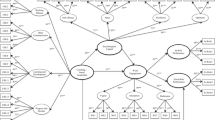Abstract
The purpose of this study was to examine the extent to which organizational work experiences could be used to understand when coaches planned to leave the profession. NCAA Division I assistant coaches (N = 188) were surveyed concerning (a) the age at which they anticipated leaving the coaching profession and (b) the extent to which the 3 work experiences described by S. Inglis, K. E. Danylchuk, and D. Pastore (1996)—Recognition and Collegial Support, Work Balance and Conditions, and Inclusivity—were fulfilled. Chi-square analyses revealed that women intended to leave the profession at an earlier age than did men. A multivariate analysis of covariance indicated that persons who intended to remain in the coaching profession after they turned 55 worked in organizational environments that emphasized Inclusivity. These results are particularly important for female coaches, as women consider an inclusive work environment to be more important than do men (D. L. Pastore, S. Inglish, & K. E. Danylchuck, 1996).
Similar content being viewed by others
References
Abelson, M. A. (1986). Strategic management of turnover: A model for the health service administrator. Health Care Management Review, 11, 61-71.
Acosta, R. V., & Carpenter, L. J. (1998). Women in intercollegiate sport: A longitudinal study—twenty one year update—1977–1998. Unpublished manuscript, Brooklyn College, Brooklyn, NY.
Acosta, R. V., & Carpenter, L. J. (2002). Women in intercollegiate sport: A longitudinal study–twenty five year update—1977–2002. Unpublished manuscript, Brooklyn College, Brooklyn, NY.
Blau, G. (2000). Job, organizational, and professional context antecedents as predictors of intent for interrole work transitions. Journal of Vocational Behavior, 56, 330-345.
Bluedorn, A. C. (1982). A unified model of turnover from organizations. Human Relations, 35, 135-153.
Cohen, J. (1988). Statistical power analysis for the behavioral sciences. Hillsdale, NJ: Erlbaum.
Cunningham, G. B., & Sagas, M. (2002). The differential effects of human capital for male and female Division I basketball coaches. Research Quarterly for Exercise and Sport, 73, 489-495.
Fishbein, M., & Ajzen, I. (1975). Belief, attitudes, and behavior: An introduction to theory and research. Reading, MA: Addision-Wesley.
Hart, B. A., Hasbrook, C. A., & Mathes, S. A. (1986). An examination of the reduction in the number of female interscholastic coaches. Research Quarterly for Exercise and Sport, 57, 68-77.
Inglis, S., Danylchuk, K. E., & Pastore, D. (1996). Understanding retention factors in coaching and athletic management positions. Journal of Sport Management, 10, 237-249.
Knoppers, A., Meyer, B. B., Ewing, M., & Forrest, L. (1991). Opportunity and work behavior in college coaching. Journal of Sport and Social Issues, 15, 1-20.
Lee, K., Carswell, J. J., & Allen, N. J. (2000). A meta-analytic review of occupational commitment: Relations with person-and work-related variables. Journal of Applied Psychology, 85, 799-811.
Lowry, C. D., & Lovett, D. J. (1997). Women coaches: Does when dictate why they leave? Applied Research in Coaching and Athletics Annual, 12, 35-53.
Pastore, D. L., Danylchuk, K. E., & Inglis, S. (1999). Confirmatory factor analyses of retention factors for American and Canadian coaches and athletic managers. Journal of the International Council for Health, Physical Education, Recreation, Sport, and Dance, 35(4), 26-30.
Pastore, D. L., Inglis, S., & Danylchuk, K. E. (1996). Retentions factors in coaching and athletic management: Differences by gender, position, and geographic location. Journal of Sport and Social Issues, 24, 427-441.
Sagas, M., Cunningham, G. B., & Ashley, F. A. (2000). Examining the women's coaching deficit through the perspective of assistant coaches. International Journal of Sport Management, 1, 267-282.
Smith, P. C., Kendall, L. M., & Hulin, C. L. (1969). The measure of satisfaction in work and retirement. Chicago: Rand/McNally.
Stangl, J. M., & Kane, M. J. (1991). Structural variables that offer explanatory power for the underrepresentation of women coaches since Title IX: The case of homologous reproduction. Sociology of Sport Journal, 8, 47-60.
Weiss, M. R., & Stevens, C. (1993). Motivation and attrition of female coaches: An application of social exchange theory. Sport Psychologist, 7, 244-261.
Author information
Authors and Affiliations
Corresponding author
Rights and permissions
About this article
Cite this article
Cunningham, G.B., Sagas, M. Occupational Turnover Intent Among Assistant Coaches of Women's Teams: The Role of Organizational Work Experiences. Sex Roles 49, 185–190 (2003). https://doi.org/10.1023/A:1024469132536
Issue Date:
DOI: https://doi.org/10.1023/A:1024469132536




